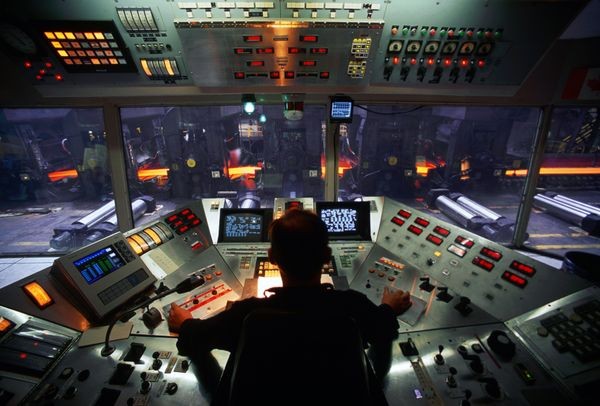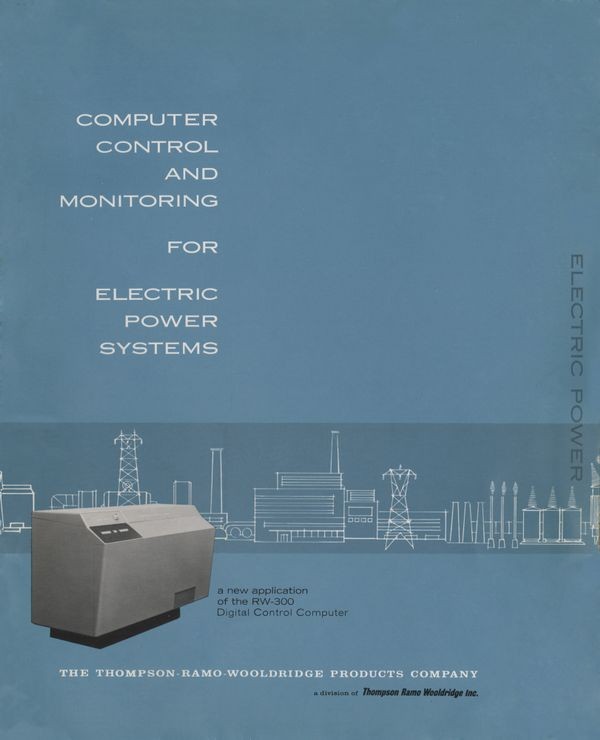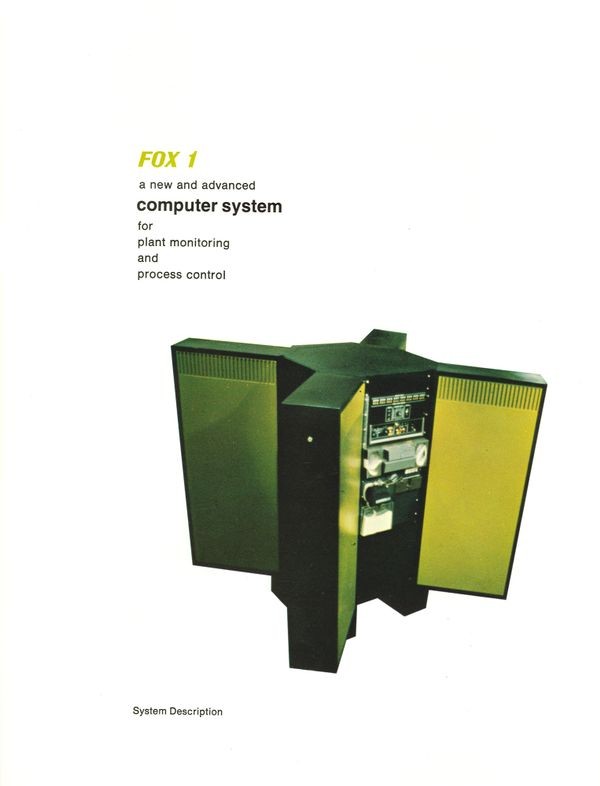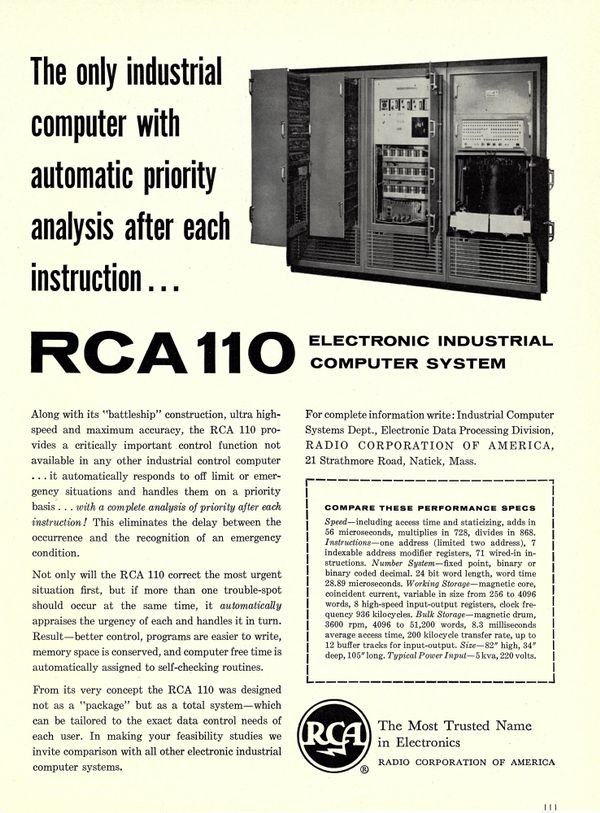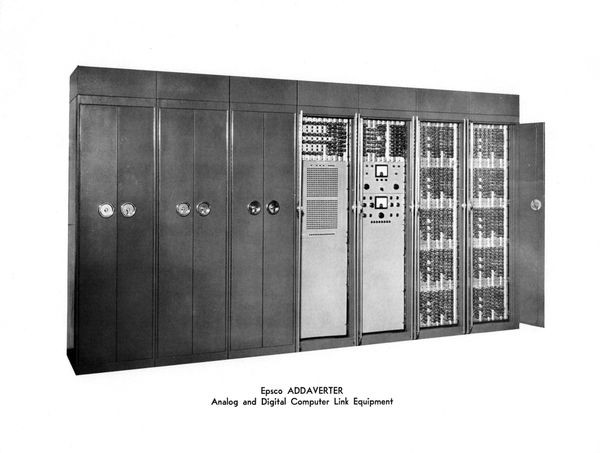Computers in Control
Steel mill operator
At this Ontario, Canada steel mill, molten steel is reduced from eight-inch blocks to 3/16th of an inch. The finishing mill operator monitors and controls the process from his computerized control panels.
Computers in Control
Monitoring activity. Reacting to changing conditions. Communicating instructions swiftly. Those are tasks facing any business’ operations manager. Automated process control systems must be able to assume those same duties.
Early process control systems were purely mechanical. They evolved into special-purpose analog and digital systems, and later, using computers, into software-controlled systems.
Texaco refinery, Port Arthur, Texas
Close cooperation between Texaco and Ramo Wooldridge achieved “closed loop control” of an industrial polymerization process using a RW-300 computer in 1959. The system increased operating efficiency and reduced catalyst replacement costs.
View Artifact DetailIndustrial-Strength Computing
Businesses first used computers for processing data. By the 1950s, digital electronic systems were planning and scheduling production. The great leap was from simply planning operations to overseeing operations. Computer control ultimately transformed manufacturing, bringing unprecedented productivity and efficiency.
Initially, digital computers simply supervised analog controllers. The next step was to skip the analog “middlemen.” Monsanto’s ethylene distillation plant in Louisiana and ICI’s soda ash plant in Britain first tried this in 1962, eliminating individual thermostats and pressure controllers and letting the computer perform those control tasks directly.
RW-300 brochure
Ramo Wooldridge marketed the RW-300 and its successors aggressively to various industries and won customers in petrochemical, chemical and power generation applications.
View Artifact DetailBypassing Computer Makers
Most early process control computers were not built by computer companies. The engineering firms designing manufacturing equipment also developed systems to control them. A notable exception was Ramo Wooldridge, a military electronics company.
As minicomputers and microcomputers became available, engineers integrated these into process control systems—an example of general-purpose technology adapted for specialized use.
Foxboro FOX 1
Foxboro, founded in the early 20th century, specialized in industrial monitoring and control instruments. The FOX 1 computer system was based on its own design; later Foxboro systems incorporated off-the-shelf minicomputers.
View Artifact DetailRCA 110 advertisement
The RCA 110 was not the most widely adopted of the company’s data processing computers. But a 110A model was responsible for system checkout and rocket launch in the Saturn Launch Control Center.
View Artifact DetailTech Talk: Converting to Digital
We live in an analog world. So, for digital computers to control operations they must convert analog input (continuous values, like electrical current from a temperature sensor) into digital data, process it, then convert it back to analog.
Bell Labs pioneered conversions between digital and analog in the 1920s so that individual telephone wires could carry multiple conversations. Today’s digital music players use similar principles, converting analog performances into digital storage, then back into analog signals for your speaker.
In 1953, Epsco, a pioneer in digital-to-analog devices, introduced one of the earliest commercial converters.
The ADDAVERTER System. A system for the interconnection of large scale analog and digital computers
Former UNIVAC engineer Bernie Gordon founded Epsco in 1953. A year later, Epsco introduced the Datrac, one of the earliest commercial analog/digital converters. Its equipment was also used to build hybrid analog-digital systems in the mid-1950s.
View Artifact Detail